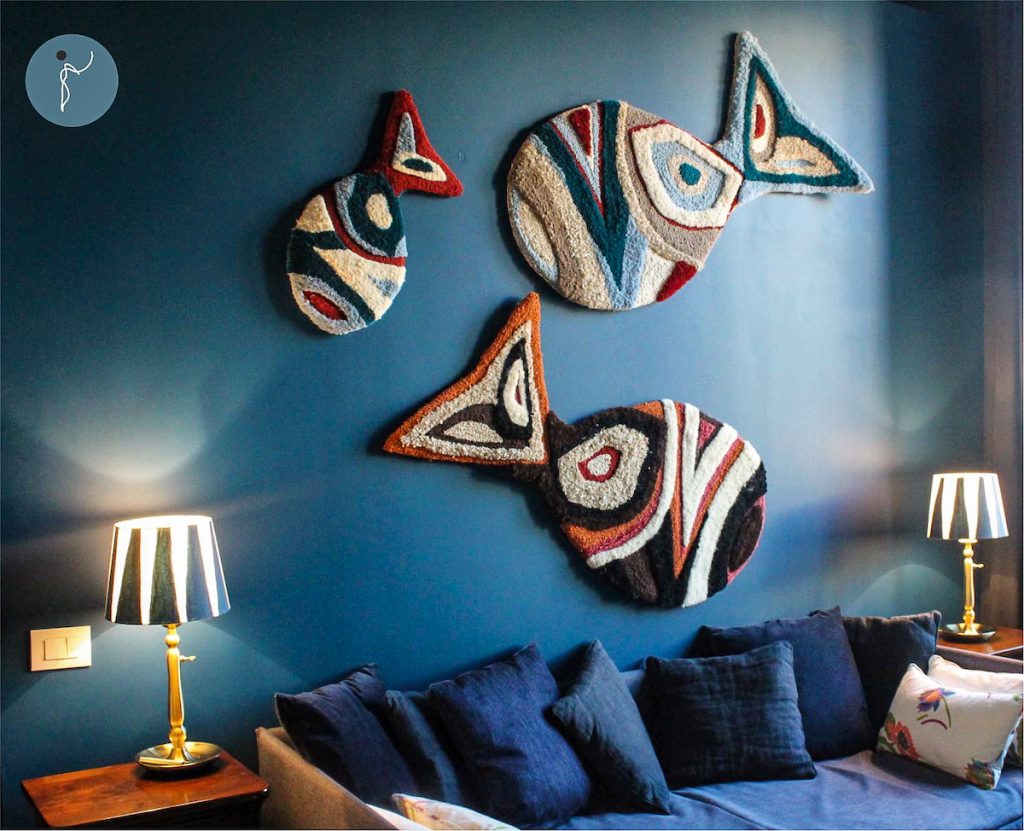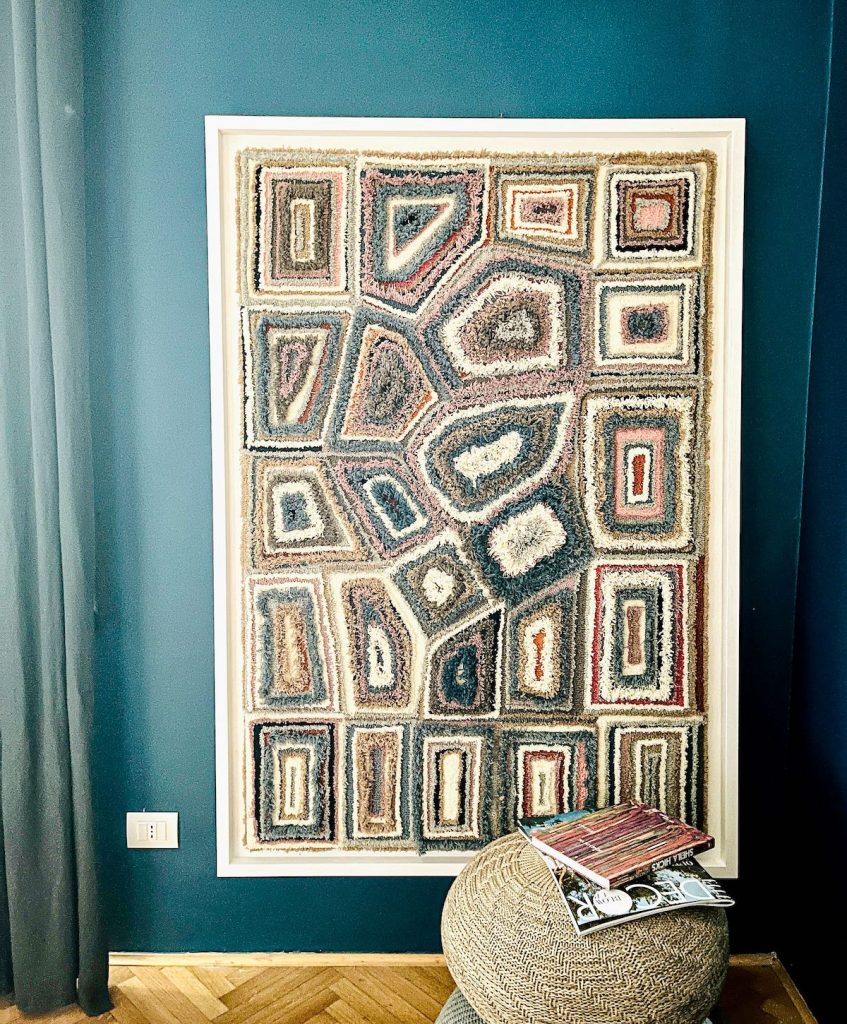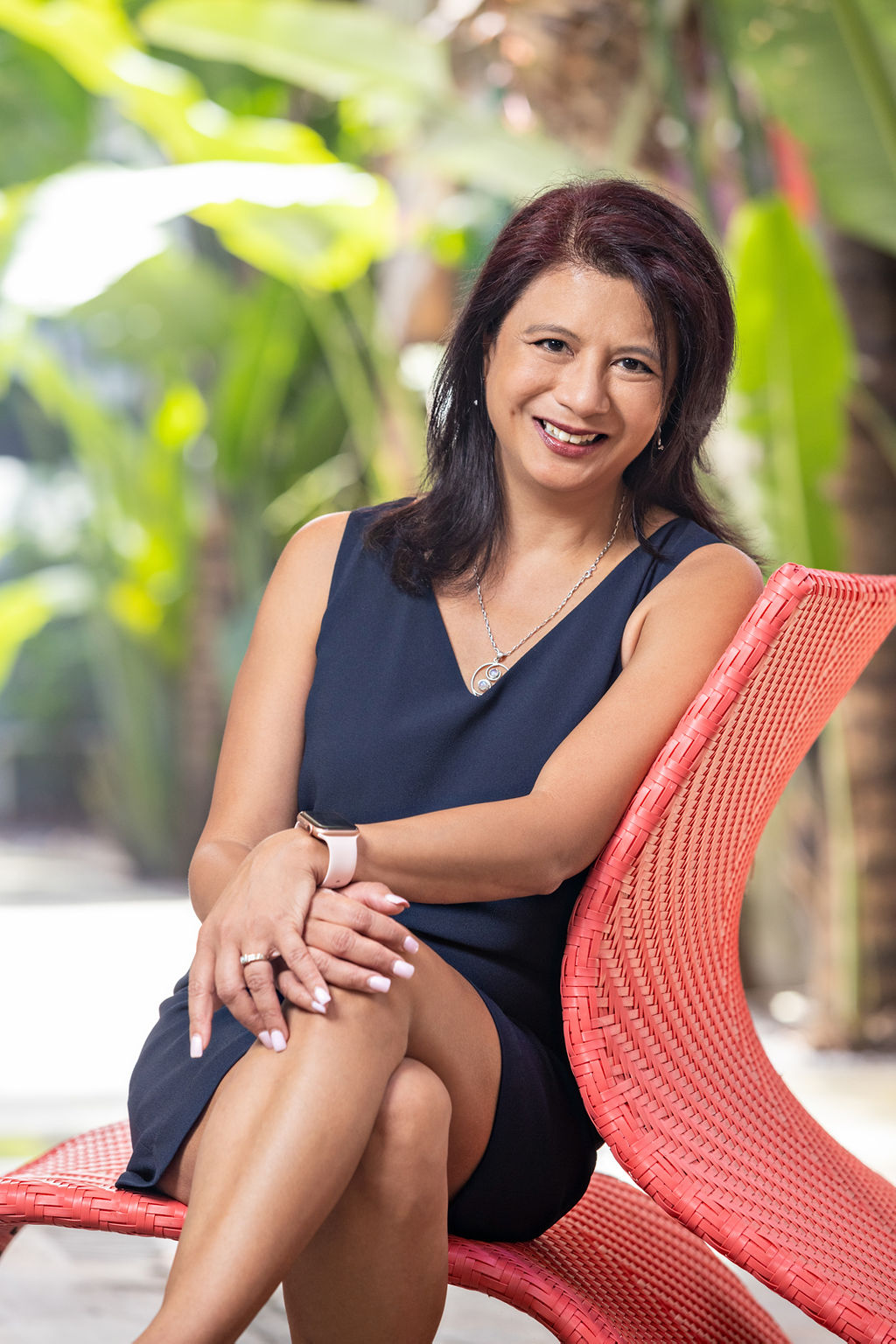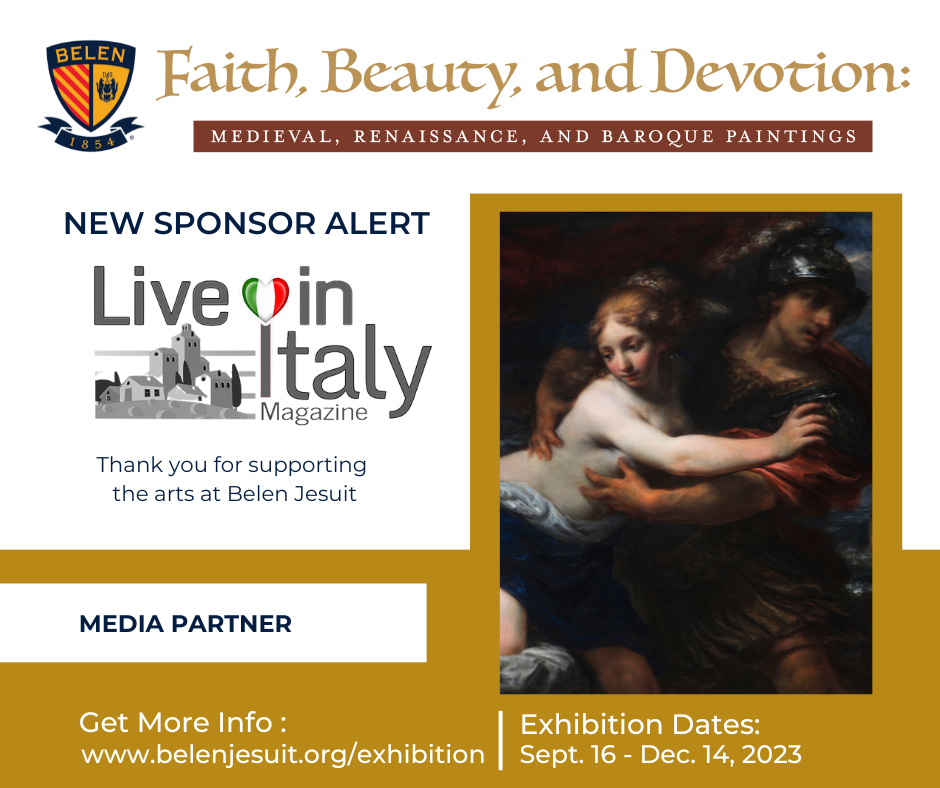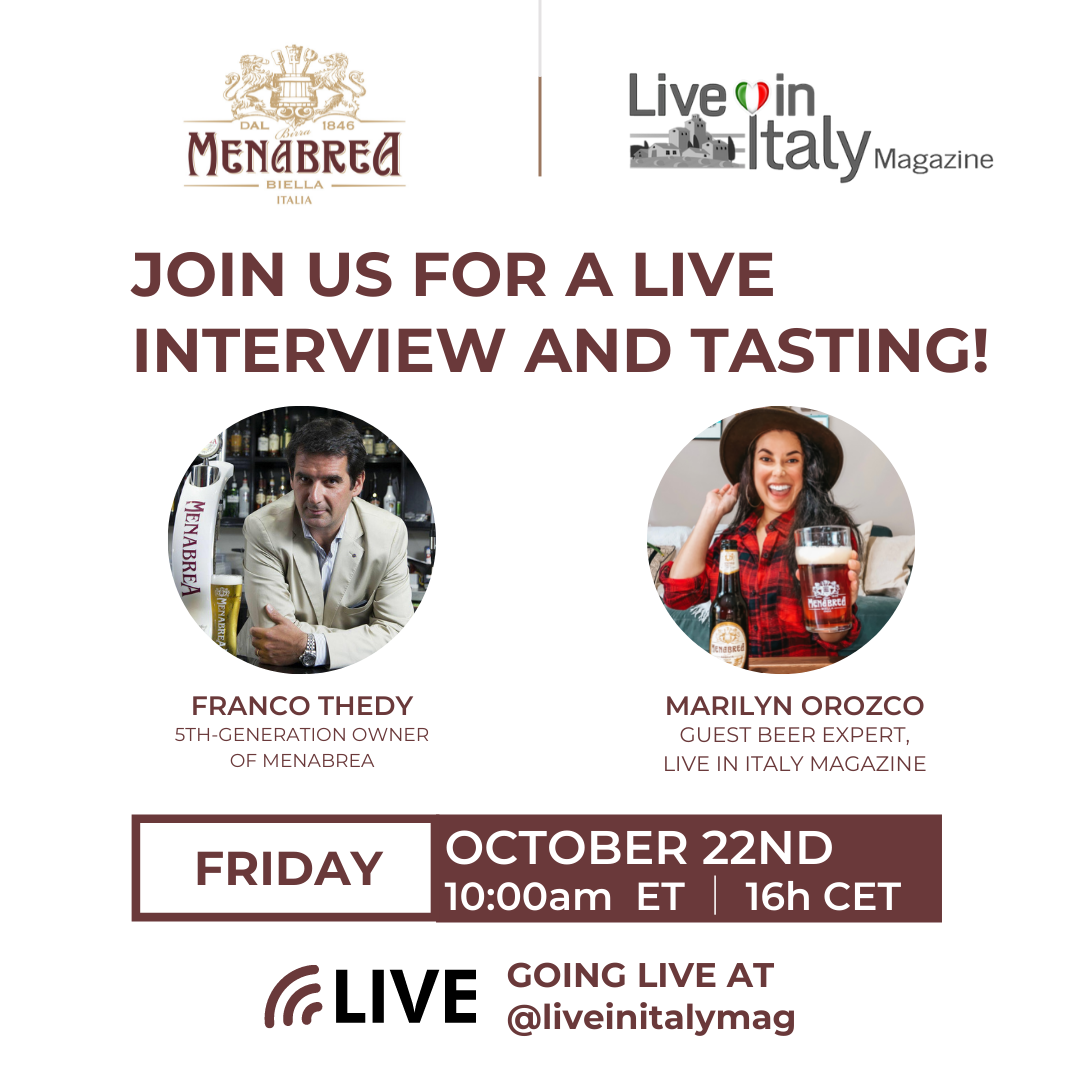Do you believe in destiny? We certainly do after talking with Jules Vissers who was born in the Netherlands, but now lives in Florence. From the first time Jules vacationed with her family in Italy to participating in an Erasmus exchange program, she was lovestruck. It seems like destiny kept pulling Jules back to Italy. In fact while studying in Milan, but unaware at the time, she met the man who she would eventually marry.
After living in different cities, Jules and her husband settled down with their two children in Florence. It was in the birthplace of the Renaissance, that she was able to revive her passion for art. She completed an MFA and opened a studio called Taftique in the historic center. Yes, for Jules, the stars aligned! We hope you enjoy reading and watching this month’s Chat with an Expat.
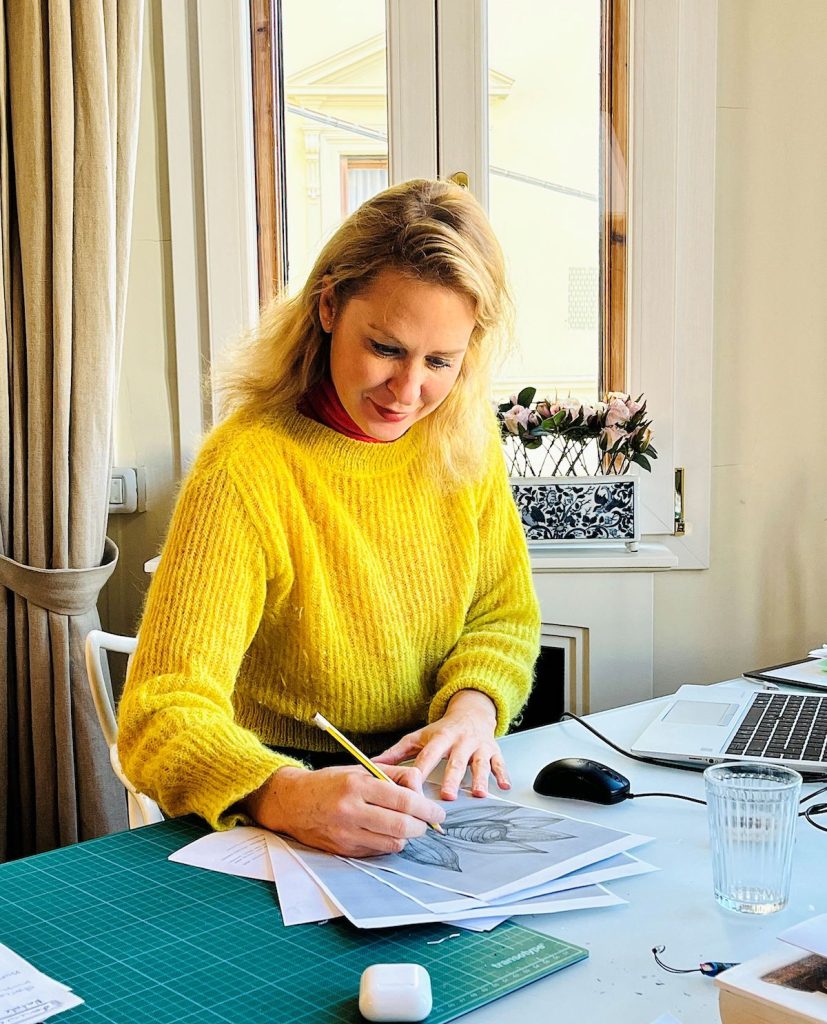
Where are you from and what were you doing prior to moving to Italy?
I am from the south of the Netherlands which is the part that is beneath the big rivers. I’m from a small village. I basically went to school there, but at 19 years old, I moved from this small village to Amsterdam.
It was a very nice city to study. I lived there for five years during my time at university.
When was the first time that you went to Italy?
The first time was with my parents for a holiday when I was 13. We went to Lake Garda near Verona and then the Tuscany coast. Then, the second time was with my high school on a study trip.
We went for eight days to Rome. It made a lifelong impression on me because it was a completion of our Latin studies through seeing all the Roman art and the fantastic architecture. This trip really triggered my interest for the Italian language, so afterwards it wanted to study Italian in university. The first year in Amsterdam I started Italian language and literature. I continued in the following years, but I also pursued European studies. That trip was really important!
Why traveling abroad interested you?
I was interested in going abroad because I wanted different experiences. Following my studies in Amsterdam, I studied for some time in the UK. I also studied for some time in Milan through an exchange problem with the University of Milan. This was when I continued my interest in Italy. I wrote my thesis in Italian.
Becoming fluent in Italian
Before going to Milan, I was already fluent. It was important otherwise I wouldn’t have been able to do the courses that were not for foreign students.
I didn’t know at the time, but the first day I arrived to do some administrative things, I met some students from the Erasmus student network and my future husband!
How did you meet your husband?
In those eight months that I was in Milan, we were friends. I met a lot of students and at that time we were in different relationships. When I returned to the Netherlands and then the UK, we always kept in contact. He would later spend some time the UK because of his job, so we met again.
In the end I decided to move to Italy because he already started his own company and couldn’t move. For me it wasn’t a problem to move to Italy because I already spoke the language. I first worked for the Dutch Consulate in 1998.
When did you decide to become a professional artist?
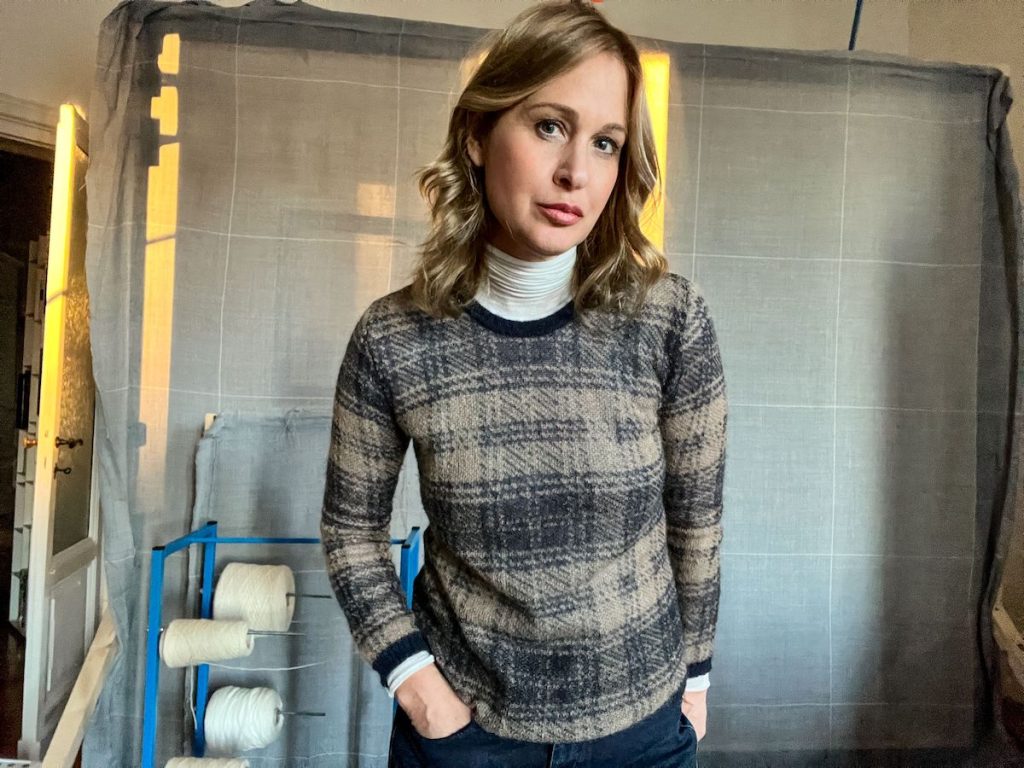
Art has always been a passion but was something that I did in my spare time when working in the office job. However, over the years I continued private classes in painting, drawing, photography, and other things. After several years, I became more interested in working with yarn.
Where have you lived in Italy?
After Milan, I lived four years in Mantua which is a beautiful city. Then, three years on the Tuscany coast, and Forli near Varenna on the Adriatic coast. Four and half years ago, I moved to Florence. It’s really our final destination because we adore living here and not because it’s related to our jobs.
After moving to Florence, I enrolled in the Academy of Fine Arts and completed a Master’s in textile arts. I dedicated eighteen months to this and then I started my studio in Florence.
Family Life
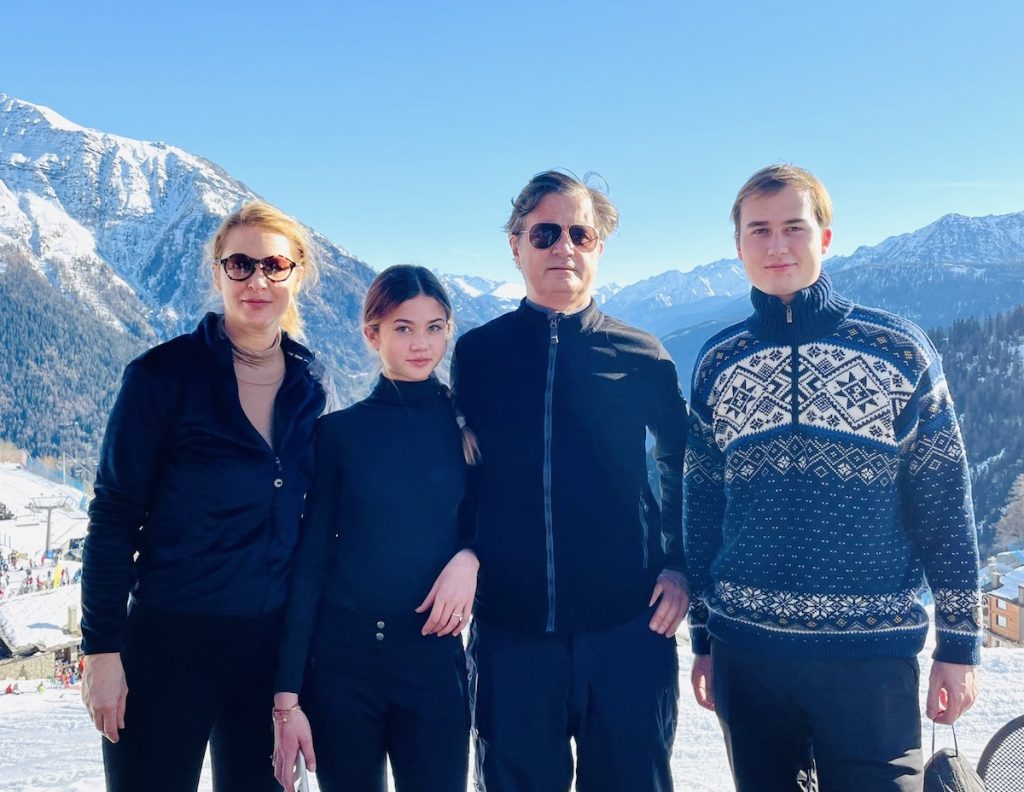
My children are already grown. My son was born when we lived in Milan and he’s already 20. My daughter was born when we lived on the Tuscany coast and she’s 14. They also moved with us and saw many parts of Italy.
What languages do you speak at home?
I have always spoken Dutch with them because I want them to learn my language, but of course, we also speak Italian. Then, they speak English really well.
Is your studio open to the public?
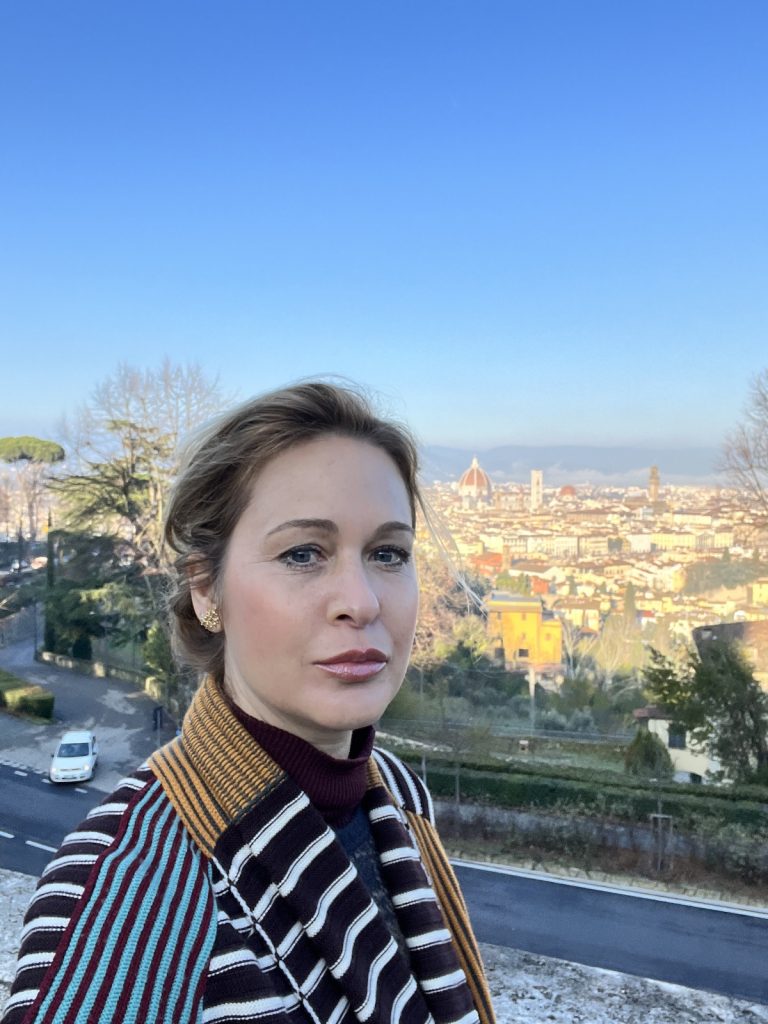
I am open by appointment only otherwise it would be difficult to work. I am in the historic center which is not accessible by car unless you have a special pass from the local municipality. I am a ten-minute walk through the Duomo. For us, it’s so nice to live here and we do everything by foot.
Coming from somewhere else, every morning I wake up and acknowledge it. For Italians, it’s just normal, but if you come from another place, you live more consciously.
Art and Artistic Process
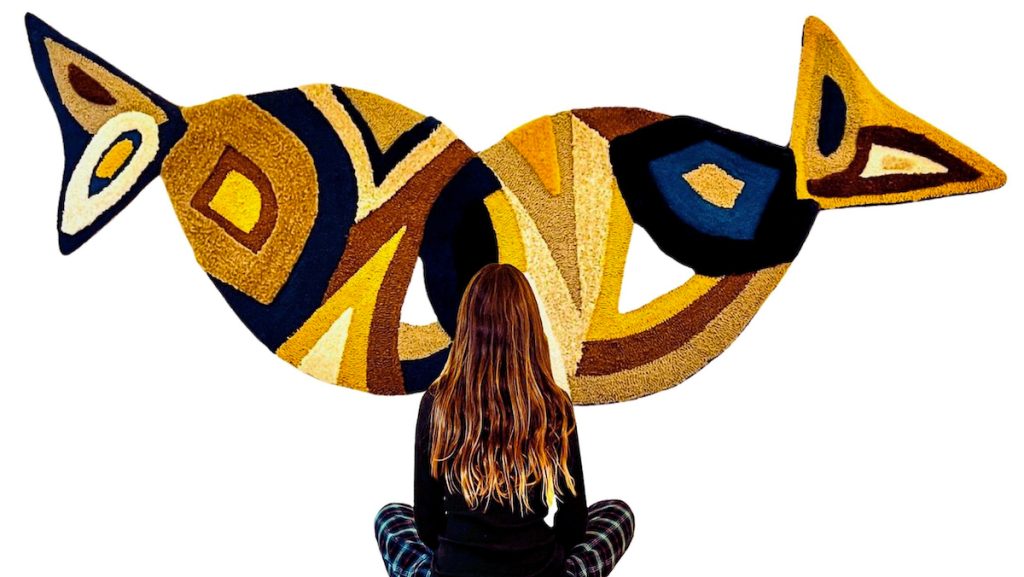
For materials, I am in a very good position. A place called Prato is very close. It’s the center of yarn and textiles including the fashion textiles, in Italy and Europe. Most of my yarn I buy from local factories because it is great quality, and they also specialize in recycled yarn. They have incredible diversity of yarns availability.
What types of yarn do you use?
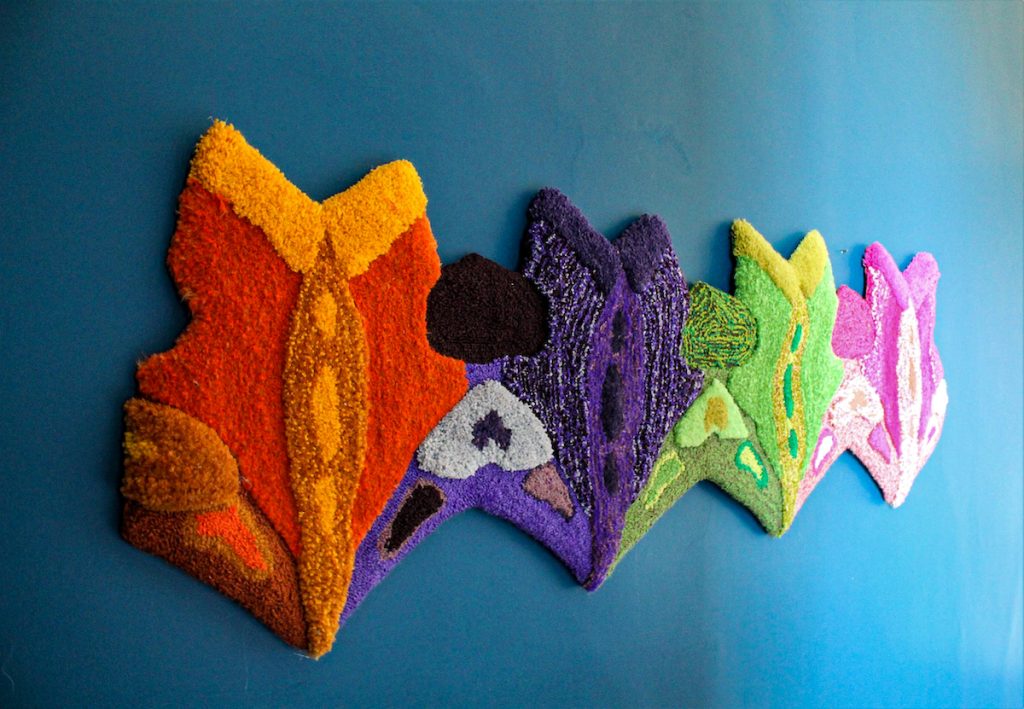
Wool, silk, mixed yarns that are combined with gold, silver, or copper threads. This type of yarn is fantastic because by using it in the tapestry, you have special effects inside the yarn and under the light, they are very beautiful.
Do you feel that through using this historic material that you are reclaiming a part of Italian history and giving it a modern flare?
Yes, there was a Renaissance tradition of adorning homes with tapestries. It was a certain period because eventually tapestries became too costly. In these antique ways of making them, it would often take several years to produce one. I am using another technique to make tapestries. It’s still slow, but not as slow as the traditional technique. What is beautiful about having tapestries in your home, apart from the aesthetic value, that there are many advantages. For example, they are used as a type of insulation and can be vacuum cleaned.
Are you works completely made by hand?
Yes. It starts with the design that is also often made from hand or digitally. On the computer, I can assign all the proportions. After I design it on the canvas that is mounted on a large frame and then I start pulling the yarns through the canvas. I could not make a copy. For me it’s impossible. Every piece is unique.
Connection with women/strength of character
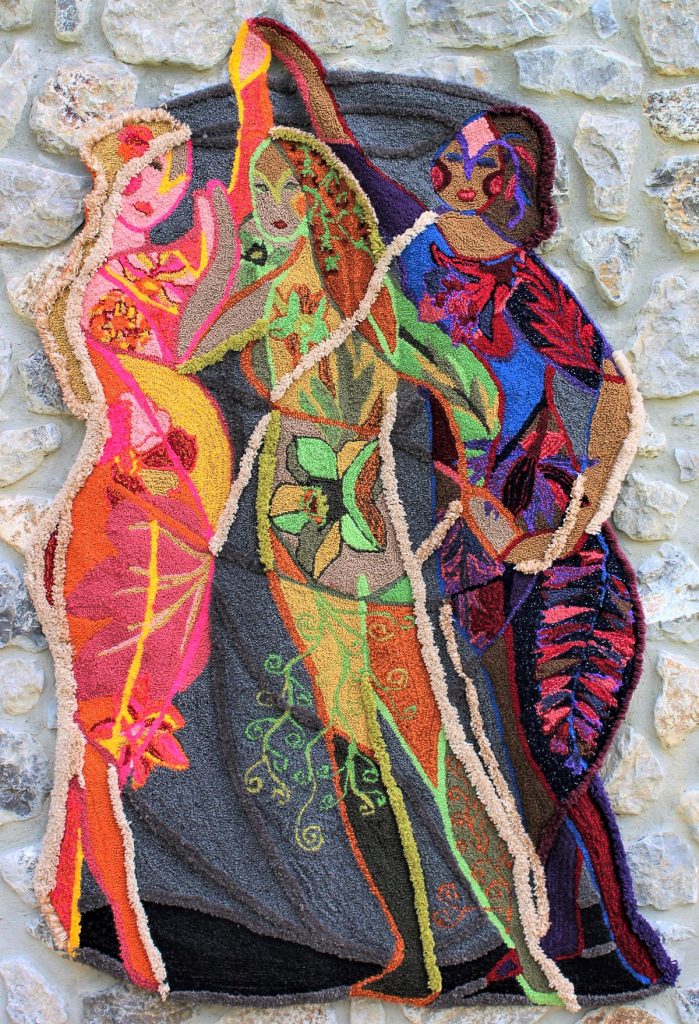
I have my own interpretation of the historical way that women are portrayed in art. It’s my own contemporary interpretation of how I would like to see them! I like to use very curved forms. It remains quite abstract, but the images can be understood.
Florence Biennale
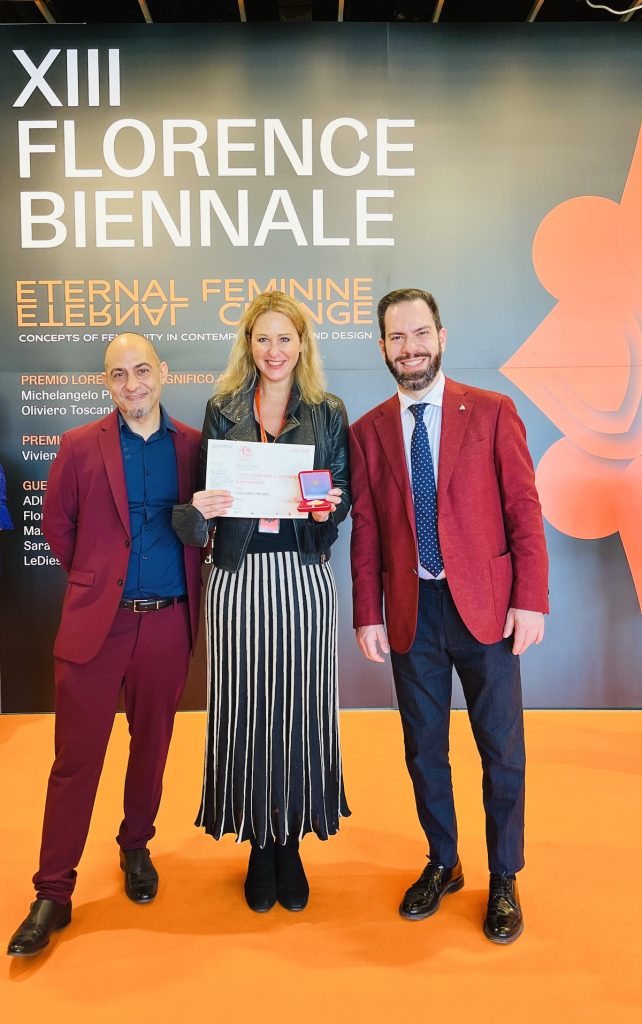
The Florence Biennale is a contemporary art fair but has been here for about thirty years and is international. It was a beautiful experience, and I met many people from all over including media, art collectors, and galleries. I was not expecting to win the Lorenzo il Magnifico award because I’m still quite young as an artist.
Has this award and participation on the Florence Biennale been a steppingstone towards greater things in your career?
Yes. It is a recognition that opens doors to bigger and more important events. I am really happy about that.
Note: Not all artists are qualified to participate. They must apply and be selected by an international jury process.
What is your definition of an expat?
If you interpret it as someone living in another country, I would be an expat. For me, an expat someone who is sent abroad by a company. In reality I am an immigrant, but of course in recent years I acquire Italian citizenship.
What was the hardest adjustment when you moved to Italy?
For me it hasn’t been hard. I should say that there are differences, but for me not so big. One thing practical is that in the Netherlands, I went everywhere on my bike. In Italy you can’t because the roads are made for cars and not bicycles. It’s too dangerous to move around on a bicycle.
What do you miss besides friends and family?
The Netherlands is a very easy-going country. In Italy, there are more traditions, and it can be more complicated. Of course, when you move to a different country you must adapt. In the first years, it was more complicated and there were simple things that I could not do as I used to. For example, stores close from 1 to 4 or 5 pm. In the Netherlands, everything is open from the morning until the evening. You can live your day as you want to, but here you have to organize what you do in the morning and then later in the evening.
Do you identify now as an Italian?
Well, I’m both. I can’t pull these things apart.
Taftique Textile Art (Florence)
Instagram
Facebook

